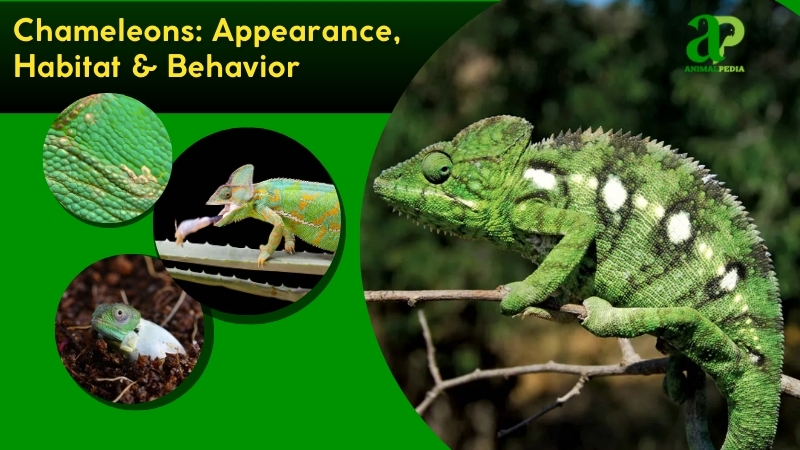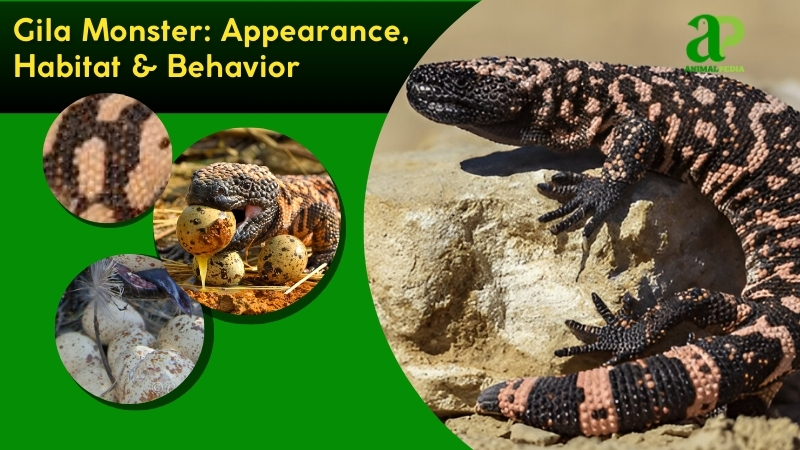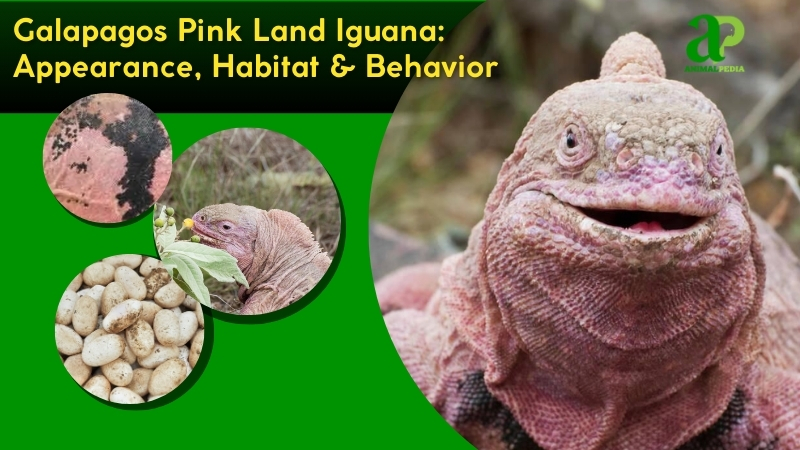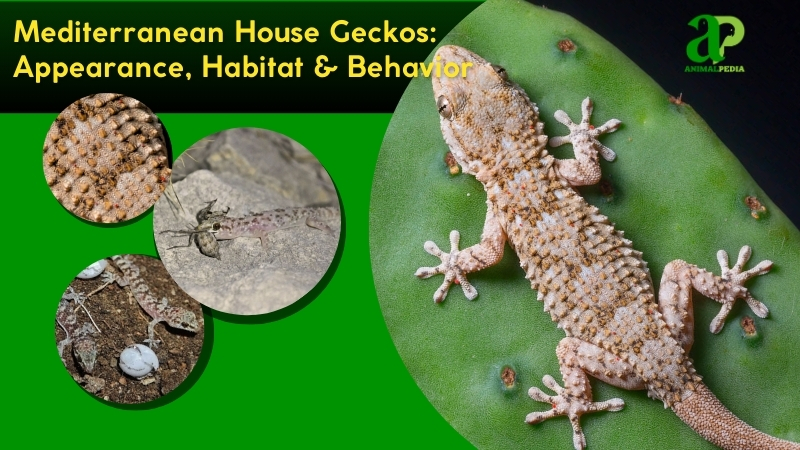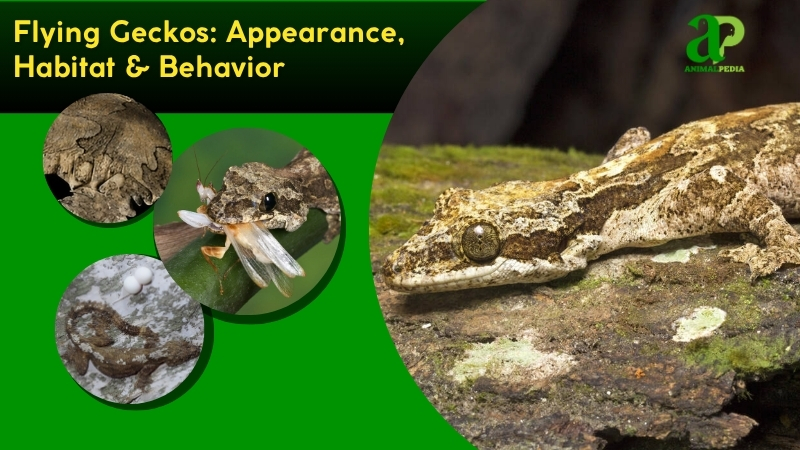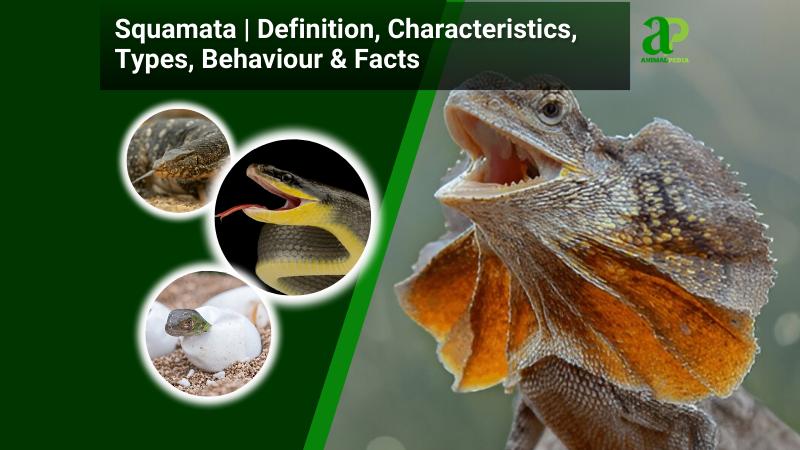Day geckos dazzle with vivid colors and unique traits. Over 70 species exist, thriving mainly on Madagascar and nearby Indian Ocean islands. These small reptiles (Phelsuma) captivate with their bright greens, blues, and reds. Their size—typically 4 to 12 inches—makes them notable among geckos.
Picture a jewel-like lizard: Phelsuma madagascariensis (Madagascar day gecko) displays emerald skin with red markings. Phelsuma lineata (lined day gecko) shows distinct stripes. Their large, lidless eyes enhance their appearance. These arboreal specialists grip trees with specialized lamellae toe pads. Madagascar, Mauritius, and the Seychelles host most species.
Day geckos inhabit tropical forests and coastal regions. Madagascar’s humid rainforests shelter large specimens like Phelsuma grandis, reaching 12 inches. Smaller species, like Phelsuma ornata from Mauritius, adapt to drier scrublands. They bask on tree trunks and foliage, absorbing sunlight. Their habitat reflects their ecological adaptability.
These geckos hunt with precision. They capture insects—crickets, flies, and moths—using quick tongue strikes. Diets vary; many consume nectar or fruit, showing omnivorous tendencies. Territorial and mainly solitary, they limit human interaction to brief encounters. Their agility defines their survival strategy.
Breeding peaks during warm, wet seasons. Females deposit two hard-shelled eggs in protected crevices, developing for 40–60 days. Hatchlings, measuring just 2 inches, develop rapidly, reaching sexual maturity in 12–18 months. Lifespans extend 10–15 years in proper conditions. This reproductive cycle maintains their populations.
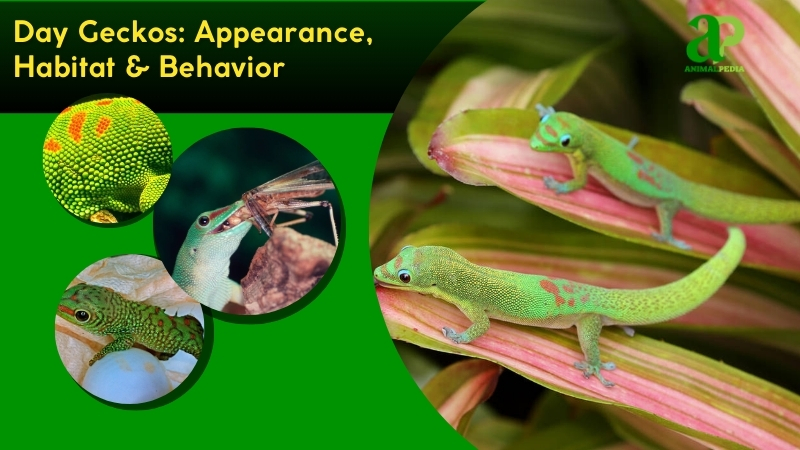
Scientific Classification
| KINGDOM | Animalia |
| PHYLUM | Chordata |
| SUBPHYLUM | Vertebrata |
| CLASS | Reptilia |
| ORDER | Squamata |
| FAMILY | Gekkonidae |
| GENUS | Phelsuma |
| SPECIES | Approx. 50–70 species |
Quick Facts
| Size | 2.6–11.8 in |
| Weight | 0.03–0.11 lb |
| Life span | 6–20 years |
| Habitat | Trees/forests/gardens/buildings |
| Diet | Insects/fruit/nectar |
| Social Structure | Solitary/pairs/small groups |
| Key Features | Bright colors/sticky toes/diurnal |
What do the Day Geckos look like?
Day geckos display slender, elongated bodies with dazzling colors. Emerald greens, cobalt blues, and fiery reds create striking patterns of spots, stripes, and bars. Their skin feels smooth yet tacky, covered in tiny, granular scales that glisten in daylight. These features make them distinctive inhabitants of Madagascar’s forests and neighboring islands, such as Mauritius.
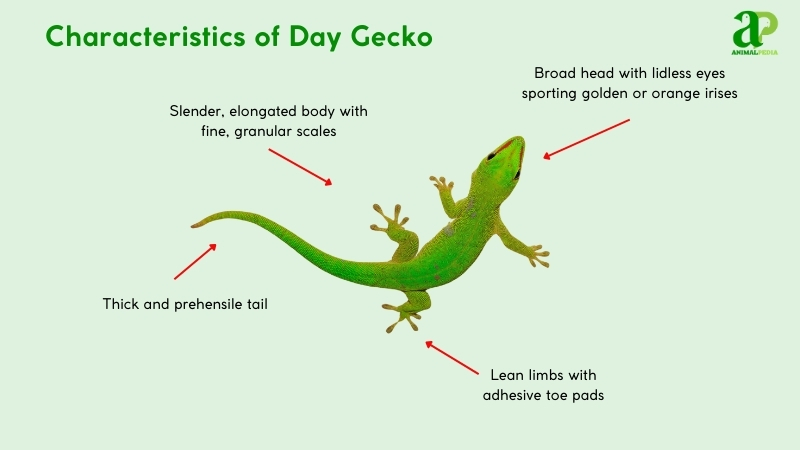
Their broad heads house large, lidless eyes with golden or orange irises—perfectly adapted for hunting prey. A sticky tongue shoots from their small mouth. The short neck transitions into a nimble, cylindrical torso. Their thin limbs end in adhesive toe pads rather than claws, ideal for vertical surfaces. Their prehensile tail, typically matching body length, stores fat reserves. Unlike their nocturnal relatives (Gekko species), day geckos (Phelsuma genus) showcase brighter coloration and permanently open eyes, distinguishing them from their duller, eyelid-equipped cousins.
How big do Day Geckos get?
Day geckos average 4–12 inches (10–30 centimeters) in length and weigh 0.5–3.5 ounces (15–100 grams). Most species are small and thrive in Madagascar’s tropical forests. Adult Phelsuma madagascariensis typically reach 9–11 inches (23–28 centimeters) from snout to tail. Day Gecko’s size suits arboreal life.

The largest, Phelsuma grandis, hits 12 inches (30 centimeters) and 3.5 ounces (100 grams). Discovered in Madagascar’s rainforests, Glaw and Vences (2020) documented this giant.
Males often outsize females by 1–2 inches (2.5–5 centimeters) and 0.5 ounces (15 grams). Females stay lighter for egg-laying. See the table below.
| Trait | Male | Female |
| Length | 10–12 in (25–30 cm) | 8–10 in (20–25 cm) |
| Weight | 2–3.5 oz (60–100 g) | 1.5–3 oz (45–85 g) |
What are the unique physical characteristics of the Day Geckos?
Day geckos exhibit distinctive physical traits unlike those of other lizards. They have adhesive toe pads that can grip almost any surface. They lack eyelids and use a clear protective membrane instead. Their vibrant coloration—brilliant greens, blues, and reds—contrasts sharply with the dull hues of other classification reptiles. These reptiles thrive in Madagascar and the surrounding Indian Ocean islands.
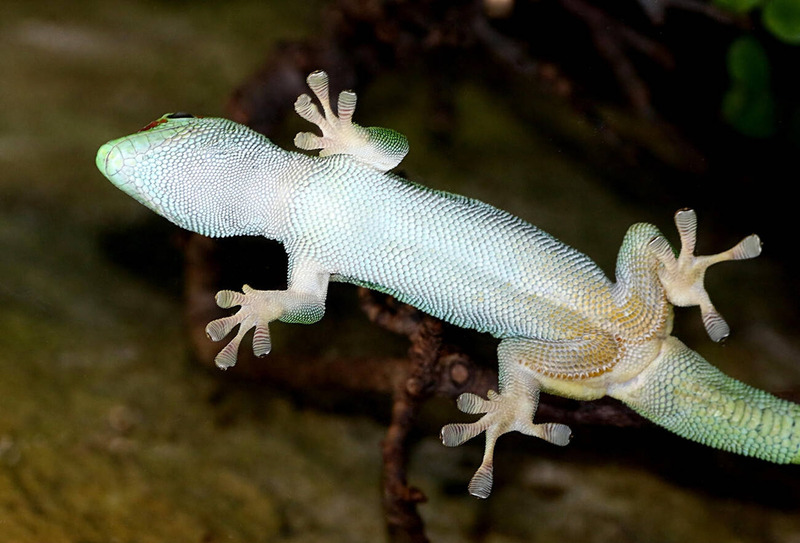
Their toe pads contain millions of tiny setae (microscopic hairs) that create van der Waals forces against surfaces—not sticky secretions like some climbing animals use. Research by Glaw & Vences (2020) shows this evolutionary adaptation lets them climb smooth tree trunks effortlessly.
Their eyecaps (spectacles), paired with bright coloration, enhance diurnal vision—unusual among mostly nocturnal gecko species. Rocha and colleagues (2016) documented how their pigmentation develops from specialized chromatophores not found in related lizard taxa.
How do Day Geckos adapt with their unique features?
Day geckos showcase striking adaptations for survival. Their vibrant colors – emerald greens and azure blues – provide essential camouflage within tropical vegetation, protecting them from predators. Their adhesive toe pads contain thousands of microscopic setae that generate van der Waals forces, enabling them to adhere to virtually any surface in their native habitats on Madagascar.
These Phelsuma species rely on specialized sensory systems for ecological success. Their acute vision rapidly detects both prey movements and potential threats, while sensitive hearing captures subtle environmental sounds in dense foliage. Their permeable skin functions as a humidity sensor, guiding these reptiles toward optimal microhabitats. Their olfactory system detects pheromones for mate location and territorial marking. This sensory integration enhances their ecological fitness and niche specialization within tropical ecosystems.
Anatomy
Day geckos, native to Madagascar and surrounding islands, are striking reptiles known for their vivid coloration and arboreal agility. Their survival in humid forest canopies is not by chance but by finely tuned anatomy. Each physiological system contributes to their success in these complex vertical habitats.
- Respiratory System: Day geckos breathe via efficient lungs, optimized for humid forests. This setup fuels their active climbing with steady oxygen intake.
- Circulatory System: A three-chambered heart pumps blood effectively. It sustains their vivid metabolism, powering quick movements and vivid coloration.
- Digestive System: Their short, efficient gut processes insects swiftly. Specialized enzymes break down prey, maximizing energy from a carnivorous diet.
- Excretory System: Kidneys filter waste into uric acid, conserving water. This adaptation thrives in tropical climates with variable hydration.
- Nervous System: A sharp brain and keen optic nerves drive reflexes. It coordinates their adhesive toe pads for precise navigation on vertical surfaces.
Together, these anatomical systems create a cohesive survival strategy. From rapid oxygen delivery to advanced sensory coordination, the day gecko’s body is a model of evolutionary adaptation—perfectly attuned to the challenges and opportunities of tropical arboreal life.
How many types of Day Geckos?
Day geckos belong to the genus Phelsuma, comprising over 70 recognized species and subspecies. These vividly colored reptiles are native to Madagascar, the Mascarene Islands, and parts of Southeast Africa. Taxonomic classification is primarily based on morphological traits—such as scalation, coloration, and toe pad structure—and increasingly supported by molecular phylogenetics (Rocha et al., 2019). These studies have refined our understanding of lineage divergence, especially among island populations.
The classification system follows Linnaean taxonomy, refined through genetic data by herpetologists like Dr. Miguel Vences, whose work on Malagasy herpetofauna has reshaped gecko systematics in the past decade.
Basic Taxonomic Diagram:
Family: Gekkonidae
└── Genus: Phelsuma
├── Species: P. madagascariensis (Madagascar Day Gecko)
├── Species: P. laticauda (Gold Dust Day Gecko)
└── Species: P. standingi (Standing’s Day Gecko)

Some species within Phelsuma show cryptic diversity—morphologically similar but genetically distinct lineages—posing challenges to conventional classification. These are undergoing re-evaluation under emerging genomic frameworks to refine evolutionary relationships and biodiversity assessments.
Where do Day Geckos live?
Day geckos inhabit Madagascar, the Comoros, and surrounding Indian Ocean islands. Eastern Madagascar’s rainforests, particularly Andasibe-Mantadia National Park, host large populations. These lizards also thrive in coastal regions near Nosy Be. Some species, like Phelsuma klemmeri, have adapted to life on small islets.
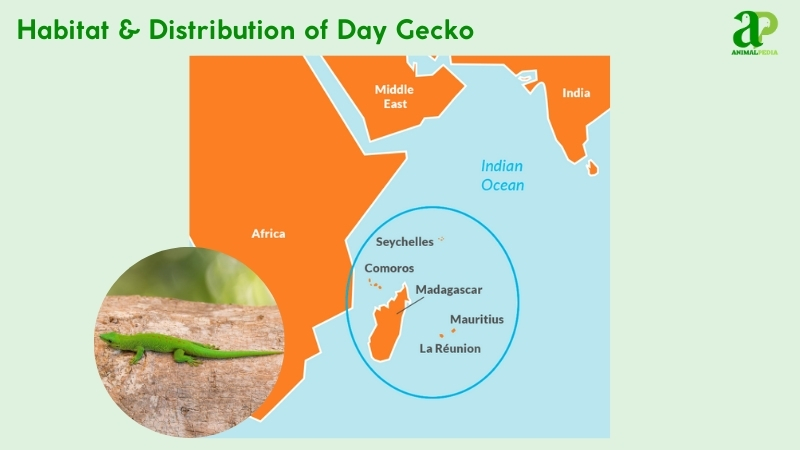
Their natural range provides the tropical climate they require—warm temperatures and high humidity support their unique physiology. Dense vegetation offers climbing surfaces while abundant insects and nectar supply their dietary needs. The region’s moisture levels facilitate their cutaneous respiration and reproductive activities.
Biogeographical evidence and DNA analysis indicate that day geckos have occupied these territories for millions of years, evolving alongside Madagascar’s isolated ecosystems. Most species exhibit strong site fidelity with limited dispersal patterns. Research by Rocha and colleagues (2016) confirms their ancient phylogenetic origins and deep connection to these stable microhabitats through comprehensive genetic mapping.
How do seasonal changes affect their behavior?
Day geckos, native to Madagascar, exhibit finely tuned seasonal behaviors shaped by the island’s distinct climatic cycles. These reptiles adapt to ecological changes with precise shifts in activity, reproduction, and energy use.
- Wet Season: Heavy rains spark mating. Males display vivid colors, chirp loudly, and defend territories. Females lay eggs in humid crevices.
- Dry Season: Food scarcity slows activity. Geckos bask longer, conserve energy, and hunt less, clinging to shaded trees.
These seasonal strategies demonstrate evolutionary fitness. According to Andreone et al. (2018), rainfall and ambient temperature directly influence mating and foraging behavior in day geckos, allowing them to thrive despite fluctuating resources.
What is the behavior of Day Geckos?
Day geckos are a fascinating genus of diurnal lizards, renowned for their vibrant appearance and agile movement. Their behavior reflects a delicate balance of ecological adaptation and social interaction, fine-tuned to Madagascar’s tropical habitats.
- Feeding Habits: These omnivores feed on insects and nectar. Their sharp vision and fast reflexes allow precise strikes on moving prey.
- Bite & Venomous: They are non-venomous. Though capable of biting, it poses no risk to humans.
- Daily Routines: Most active in daylight, they bask in the morning to thermoregulate, then forage or rest in the afternoon.
- Locomotion: Specialized toe pads with microscopic setae provide grip, enabling vertical and inverted climbs with ease.
- Social Structures: Territorial by nature, males defend perches and food sources, while females engage primarily during brief courtship periods.
- Communication: Visual and acoustic signals—like chirping, color shifts, and tail movements—convey dominance, warning, or mating readiness.
This intricate blend of behaviors not only ensures survival but also supports their reproductive success. Understanding these patterns gives insight into the species’ ecological niche—and sets the stage to explore their dietary adaptations in more depth.
What do Day Geckos eat?
Day geckos are omnivorous reptiles that feed on a mix of live prey and plant-based materials. Their primary diet includes insects like crickets, flies, and beetles, along with nectar, pollen, and soft fruits such as bananas and papayas. These lizards are not aggressive toward humans and do not pose any predatory threat. They capture prey with swift bites and swallow it whole—cutting isn’t involved. If the prey is too large, they abandon it to avoid choking.
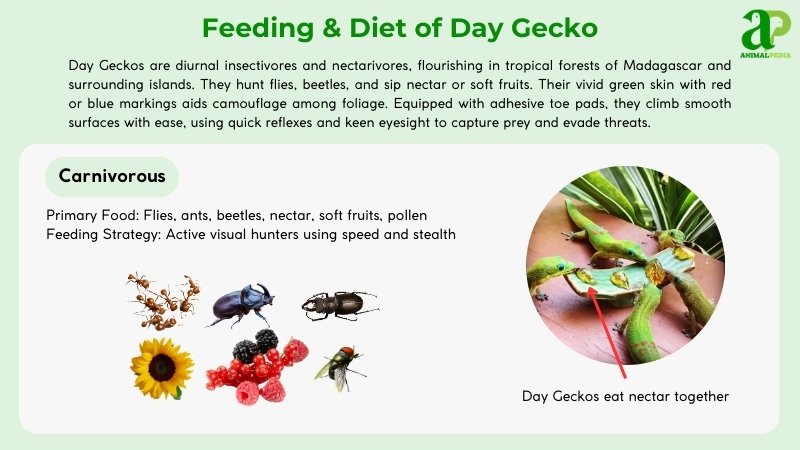
- Diet by Age
Juvenile Day Geckos primarily feed on small invertebrates such as fruit flies and tiny crickets. Their small jaws limit prey size, but their protein needs are high for rapid growth. As they mature, Day Geckos’ diet diversifies to include larger insects, nectar, pollen, and overripe fruit. Adults balance animal and plant-based foods, optimizing energy intake for reproduction and territory defense.
- Diet by Gender
Male and female Day Geckos share similar dietary preferences, both consuming insects and sugary plant matter. However, dominant males often control high-resource territories, giving them access to richer foraging areas. Despite this territorial advantage, there is no conclusive evidence of sex-based dietary divergence in nutritional needs or prey selection.
- Diet by Seasons
Seasonal variation influences dietary patterns. In the wet season, insect populations surge, making animal prey the primary food source. Nectar and fruit also become more plentiful, enriching their carbohydrate intake. During the dry season, when insect abundance drops, geckos shift toward more nectar and soft fruit, supplementing energy needs while reducing hunting activity. This flexible foraging strategy supports survival in fluctuating tropical ecosystems.
How do Day Geckos hunt their prey?
Day Geckos are skilled hunters, relying on their sharp eyesight and quick reflexes to capture prey. These colorful reptiles have excellent vision for spotting insects and small invertebrates. When they detect potential food, Day Geckos move swiftly and precisely towards their target.
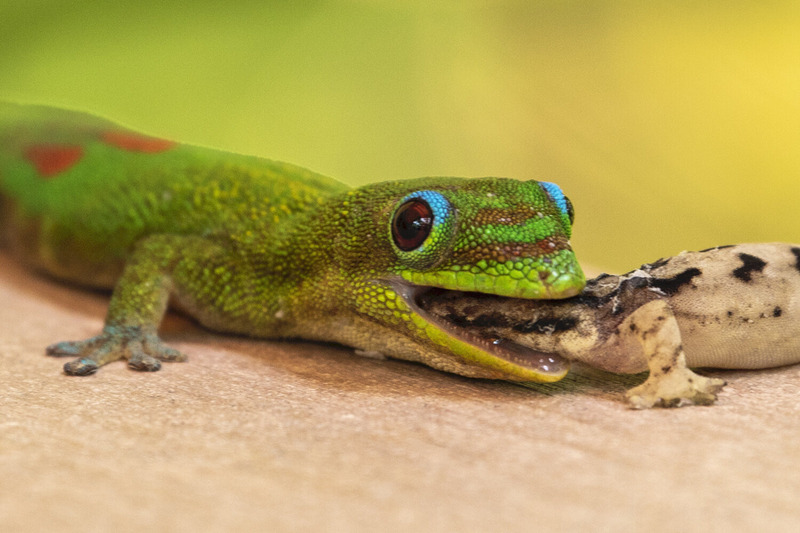
Their hunting technique is fascinating to watch; they stalk their prey carefully, ensuring they go undetected. When the moment is right, Day Geckos pounce with agility, seizing their meal in a rapid and calculated manner. Their fast reflexes are crucial for successful hunts.
With their stealthy approach and rapid movements, Day Geckos showcase impressive hunting abilities in their natural environment. Their adaptability in different hunting scenarios makes them formidable predators among geckos.
Observing a Day Gecko in action highlights their exceptional hunting skills.
“Day Geckos exemplify precision and speed in their hunting tactics, showcasing the abilities of these captivating reptiles.”
Are Day Geckos venomous?
Day Geckos lack venom. They catch prey through agility and speed instead. These colorful reptiles possess quick reflexes and superior climbing abilities that let them hunt insects precisely.
Their keen vision detects movement from far away, making them effective hunters in their natural habitat.
Day Geckos pose no danger to humans despite their exotic appearance. Their hunting techniques demonstrate natural resourcefulness without toxins. These Phelsuma species capture prey through natural skills rather than chemical weapons, showcasing adaptation within the gecko family.
When are Day Geckos most active during the day?
Day Geckos are most active in the early morning and late afternoon when the sun warms them up. They can be seen basking in the sunlight, soaking in its warmth to start their day.
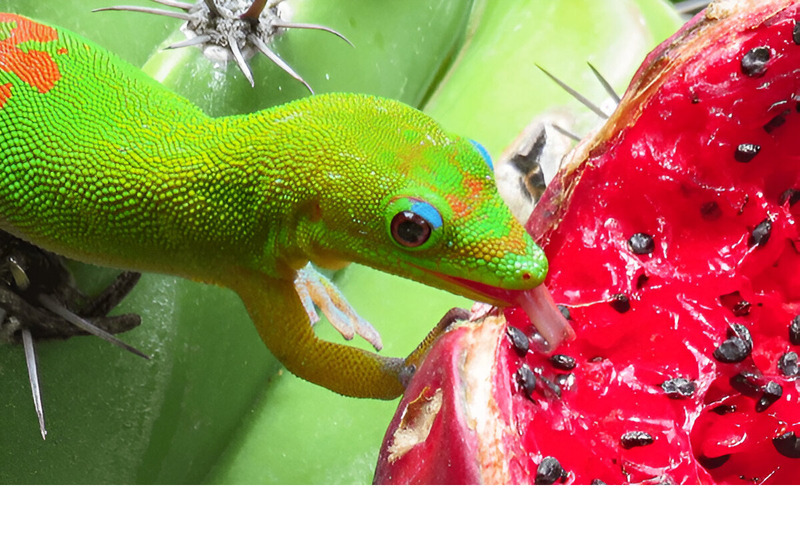
As the morning goes on, Day Geckos explore their surroundings, searching for insects and enjoying nectar from flowers. Their activity peaks in the afternoon, giving observers a chance to witness their playful behaviors and swift movements.
When the day is hottest, Day Geckos seek shaded spots to cool off and save their energy for later. This helps them avoid overheating and stay lively during cooler times.
If you want to watch these colorful geckos in action, mornings and late afternoons are the best times to do so.
Understanding the times when Day Geckos are most active offers a firsthand look at their vibrant behaviors. Whether they’re darting around branches or lazing in the sun, observing them during their peak hours is a delightful experience.
How do Day Geckos move on land and water?
To witness how Day Geckos move on land and in water, observe their unique patterns of locomotion. These colorful creatures are agile on land, utilizing their long toes and sharp claws to grip surfaces firmly. With quick, jerky movements, they showcase their speed and reflexes when scurrying across the ground.
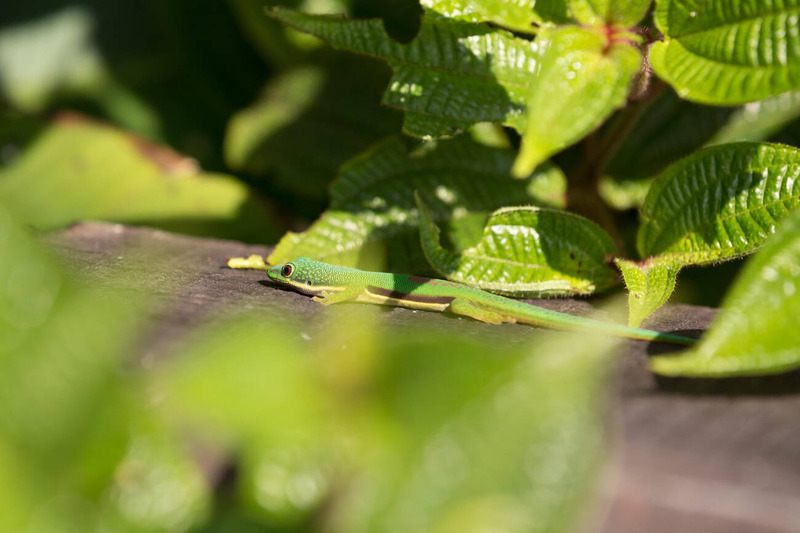
Day Geckos excel at climbing vertical surfaces too, thanks to their specialized toe pads that allow them to effortlessly stick to various textures.
In water, Day Geckos exhibit a different skill set. While not as graceful as aquatic animals, they can navigate through water by paddling with their limbs. Their tails serve as rudders, offering balance and steering abilities in aquatic settings. Although not their preferred mode of transportation, Day Geckos can adapt their movements to travel through water when needed.
Whether on land or in water, these geckos demonstrate versatility with their locomotion skills.
Do Day Geckos live alone or in groups?
Contrary to popular belief, Day Geckos (Phelsuma species) are primarily solitary reptiles. In their natural habitats across Madagascar and other Indian Ocean islands, these lizards typically live alone and defend their territories. While occasionally seen in proximity to others, especially during breeding season, they do not form social groups or cooperative communities.
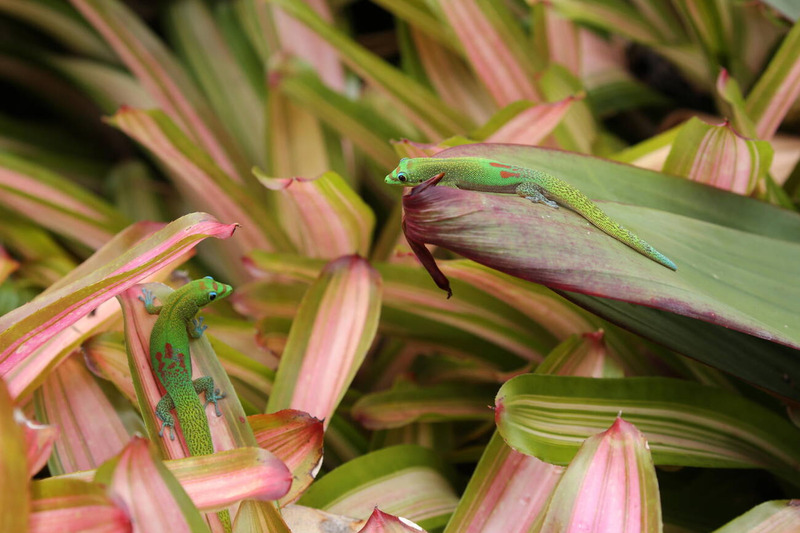
Territorial behavior is fundamental to Day Gecko ecology. Males establish and actively defend specific areas, using bright coloration and body posturing to warn off rivals. When multiple geckos appear together, it usually indicates either a temporary mating pair or competition for resources rather than social bonding.
Female Day Geckos may tolerate the presence of males during courtship, but otherwise maintain separate territories. Resource competition drives this solitary lifestyle, as individuals compete for optimal basking spots, feeding areas, and shelter. In captivity, keeping multiple Day Geckos together often results in stress, aggression, and potential injury unless provided with extremely spacious enclosures with multiple retreats.
How do Day Geckos communicate with each other?
Day Geckos communicate through distinct mechanisms, relying primarily on body language. These vibrant reptiles employ specific gestures to convey messages within their social structure.
During breeding periods, males display their bright throat pouches to attract females. They perform head bobbing or tail flicking to establish dominance or define territory boundaries. Beyond visual signals, Day Geckos produce vocalizations, including chirps and clicks, when defending territory or signaling distress.
Chemical communication represents another crucial aspect of gecko interaction. Through pheromone deposits in their habitat, these Phelsuma species indicate their presence and broadcast reproductive readiness to conspecifics.
These communication methods form an integrated system that regulates social hierarchy and reproductive behavior among Day Gecko populations in their natural environment.
How do Day Geckos reproduce?
Day geckos reproduce sexually, with breeding occurring during Madagascar’s wet season from November to April. Males display readiness through bright color flashing and chirping calls. Females respond with subtle tail movements. Brief courtship leads to mating on branches or vertical surfaces.
After successful copulation, females lay two adhesive eggs in protected locations—tree bark, leaf junctions, or rock crevices. These eggs weigh approximately 0.5 to 1 gram each. Natural hiding spots shield eggs from predators and environmental threats. Males provide no parental care after mating, while females offer minimal protection before leaving the site.
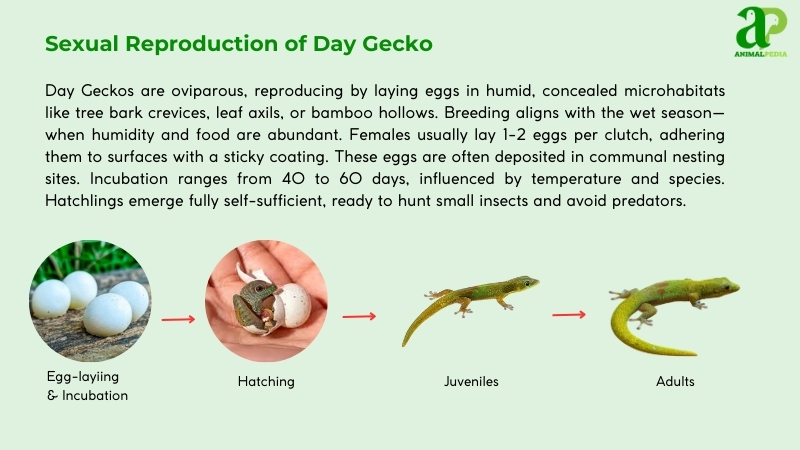
Incubation takes 40 to 60 days, depending on temperature and humidity. Hatchlings emerge completely independent and begin hunting tiny insects within days. Growth proceeds rapidly, with most day geckos reaching sexual maturity within 6 to 12 months.
The lifespan of day geckos typically ranges from 5 to 10 years. Some species, like Phelsuma madagascariensis, may live longer in captivity under ideal conditions. Though environmental stressors such as drought can disrupt their reproductive cycles, the adaptability of these geckos supports population resilience in their native habitats.
How long do Day Geckos live?
Day geckos typically live 5 to 10 years in the wild, varying by species and habitat conditions. In captivity, with proper care, temperatures, and nutrition, these bright reptiles often reach 15+ years—particularly larger species like the Madagascar giant day gecko (Phelsuma madagascariensis).
Male and female day geckos share similar lifespans. Poor conditions, stress, or injuries cut their lives short. Their life cycle follows a clear pattern: rapid growth as juveniles, reaching sexual maturity at 6-12 months, followed by active breeding years. Proper UVB exposure, calcium supplementation, and appropriate terrarium setup directly impact their longevity.
Wild populations face predation, seasonal changes, and habitat quality challenges. Captive specimens benefit from veterinary care, consistent feeding schedules, and protection from environmental stressors—extending their natural lifespan considerably.
What are the threats or predators that Day Geckos face today?
Day geckos confront habitat loss, climate change, and invasive species. Predators and human actions compound their risks.
- Habitat Loss: Deforestation slashes their rainforest homes. Populations shrink as nesting sites vanish.
- Climate Change: Rising temperatures disrupt breeding. Droughts cut food supply, weakening survival odds.
- Invasive Species: Rats and cats eat eggs and adults. Competition rises, stressing native ecosystems.

Birds like hawks, snakes, and larger lizards hunt them. In Madagascar, the Madagascar harrier-hawk and boa species strike fast. Introduced mammals—rats, cats—prey relentlessly.
Logging and agriculture destroy habitats. The pet trade captures wild geckos, depleting numbers. Research by Irwin et al. (2016) shows deforestation in Madagascar drives 80% of reptile habitat loss, hitting day geckos hard. Conservation lags, but awareness grows.
These vibrant climbers face a gauntlet. Their adhesive feet can’t grip a shrinking world.
Are Day Geckos endangered?
What conservation efforts are underway?
Day geckos face mounting threats, but targeted conservation initiatives offer hope. The Durrell Wildlife Conservation Trust and Mauritian Wildlife Foundation lead these efforts. They focus on habitat restoration and species recovery in Madagascar and Mauritius, protecting these vibrant reptiles.
Legal protections strengthen conservation work. The Convention on International Trade in Endangered Species (CITES) lists many Phelsuma species under Appendix II, restricting trade. Madagascar’s laws prohibit habitat destruction and unauthorized capture. Poaching penalties include fines and imprisonment.
Captive breeding programs form a crucial strategy. Durrell’s work with the Lesser Night Gecko began in 2008, aiming to reintroduce them to Mauritian islets. By 2015, they released over 200 geckos, with Ilot Vacoas now supporting approximately 369 individuals. In Madagascar, local breeding efforts for Phelsuma klemmeri increased populations by 30% in protected areas.
The IUCN and USAID drive awareness through funding patrols and education programs. Success stories demonstrate effective conservation: Phelsuma madagascariensis maintains stable populations, while Phelsuma borbonica recovers on Réunion. These combined approaches—legislation, breeding initiatives, and field protection—create a survival pathway for day geckos, showing how science-based conservation yields results.
Frequently Asked Questions
Can Day Geckos Change Color Like Other Species of Geckos?
Yes, Day Geckos can change color similarly to many other gecko species. This ability helps them regulate body temperature and blend into their surroundings for safety. It’s a fascinating and useful adaptation in the gecko world.
Do Day Geckos Have Any Unique Adaptations for Hunting?
Yes, Day Geckos utilize their unique adaptations for hunting. Their specialized toe pads grant them exceptional grip and maneuverability, enabling swift movements to capture prey. This trait sets them apart from other gecko species.
How Long Do Day Geckos Typically Live in the Wild?
In the wild, Day Geckos typically live for about 6 to 8 years. Factors like habitat quality, food availability, and predation risks influence their lifespan. Enjoy watching these beautiful creatures thrive in their natural environment!
Are Day Geckos Commonly Kept as Pets?
Yes, day geckos are commonly kept as pets. They are colorful, active, and relatively easy to care for. Remember to provide them with a spacious enclosure, proper temperature, humidity, and a varied diet for their well-being.
Do Day Geckos Make Any Vocalizations or Sounds?
Yes, Day Geckos do not make vocalizations. They communicate through body language like head-bobbing and tail-waving. However, they are generally quiet species. They exhibit vibrant colors and diverse behaviors that make them fascinating pets.
Conclusion
In conclusion, Day Geckos captivate observers with their electric colors, distinctive morphology, and predatory efficiency. These diurnal reptiles thrive in the tropical ecosystems of Madagascar and surrounding islands, demonstrating seasonal adaptations and exceptional hunting prowess.
Their arboreal lifestyle and specialized toe pads allow them perfect vertical mobility, while their ability to vocalize sets them apart from many reptilian counterparts. From the tiny Phelsuma klemmeri to the larger Phelsuma grandis, the genus offers biodiversity that appeals to both scientists and hobbyists.
For reptile enthusiasts considering vivarium specimens, these Phelsuma species represent an engaging taxon that combines visual appeal with fascinating behavior patterns. Should you encounter these photogenic lizards in their indigenous habitat, take a moment to appreciate their evolutionary adaptations and ecological significance—a living testament to nature’s extraordinary design.





